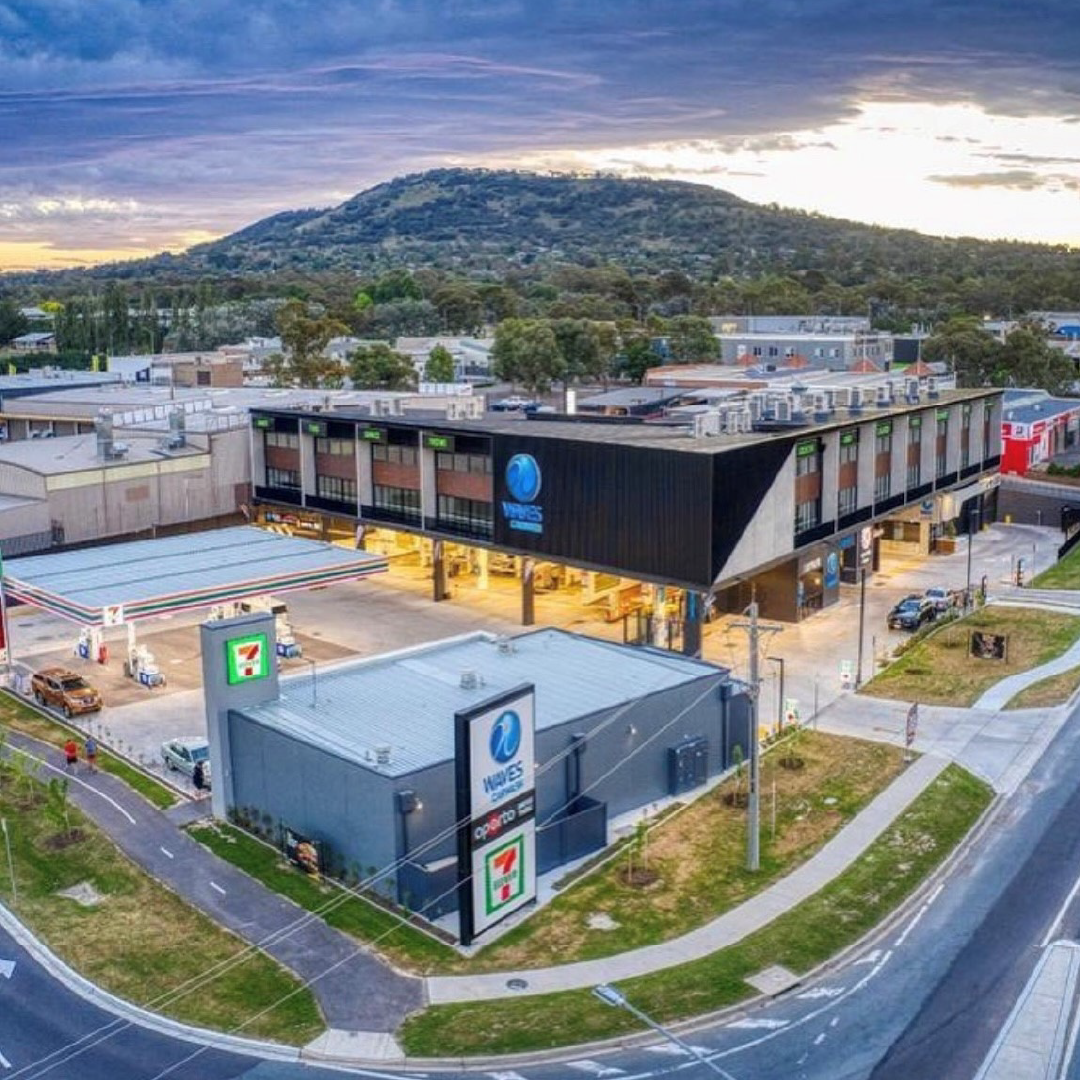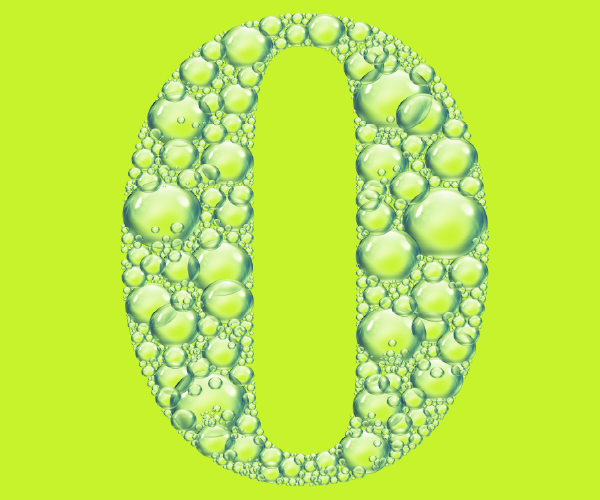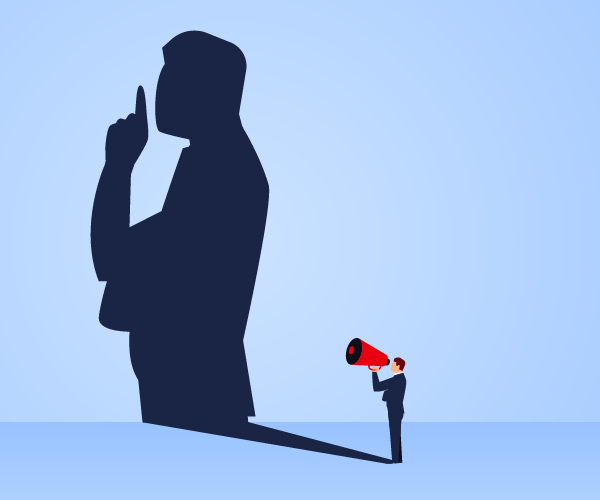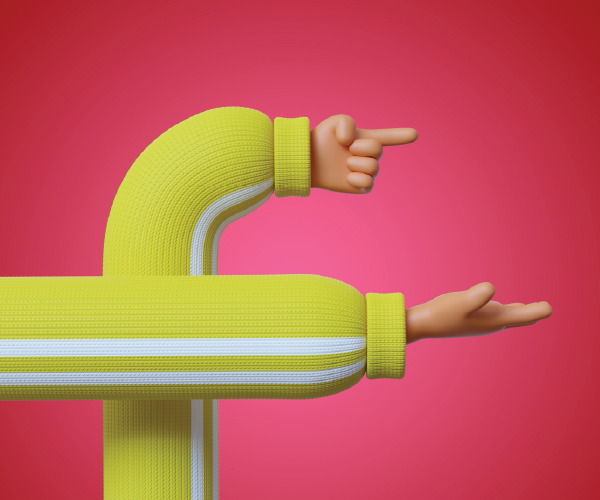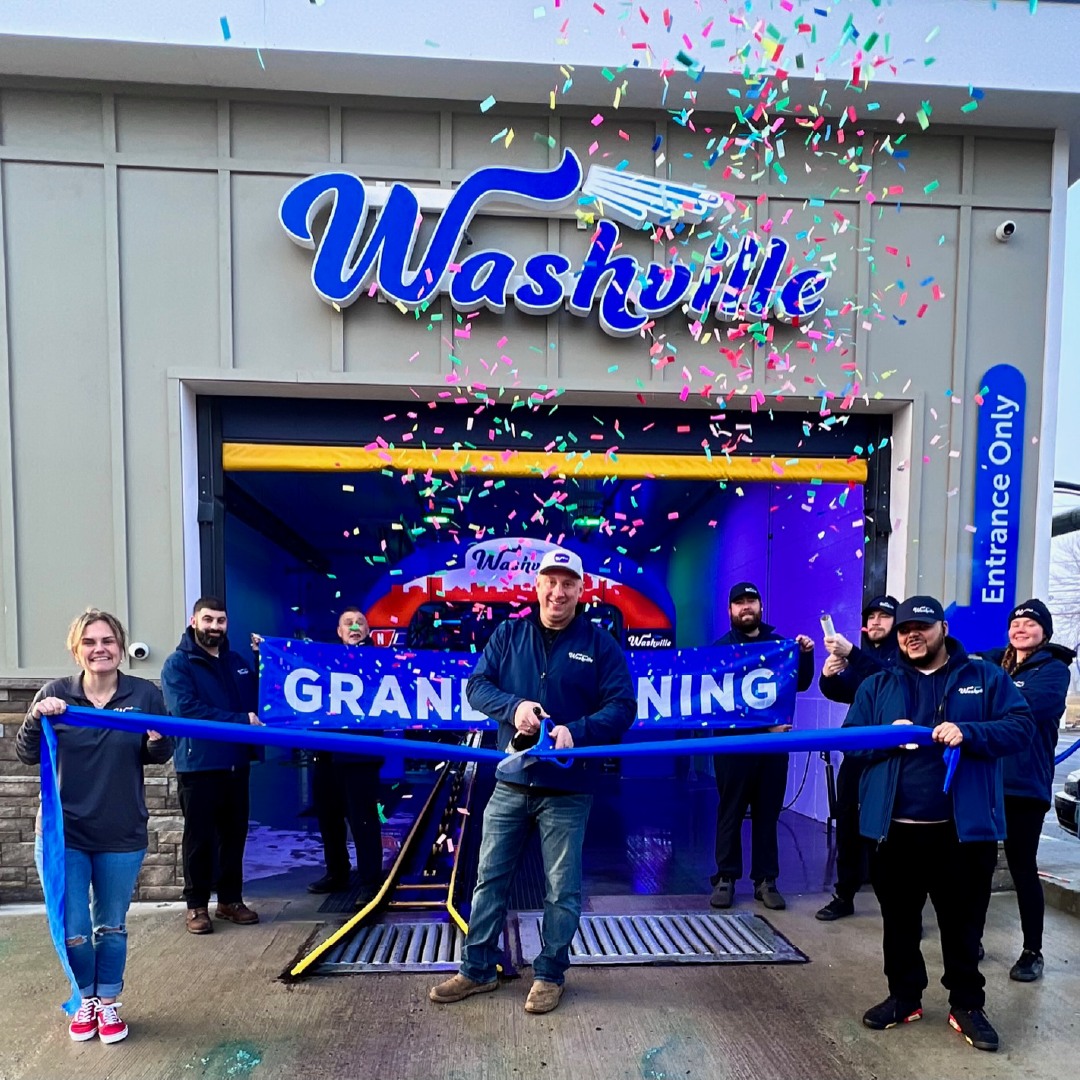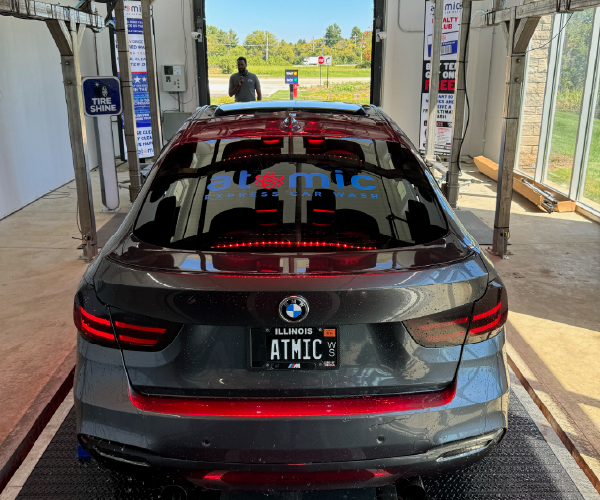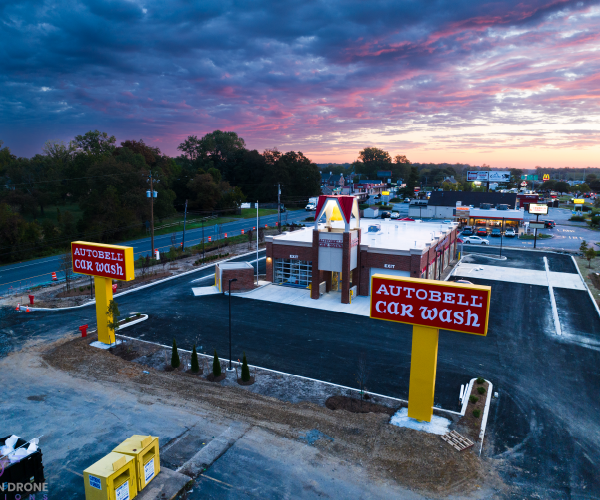
The View from Above
November 1, 2024
7 minute ReadCar Washes Use Drone Photography to Capture a Whole New Perspective for Their Marketing Campaigns.
When Thomas Wasinski founded Aerial Agents in February 2014, he was one of the only providers of drone photography in the Cleveland area, and it led to some pretty cool experiences, capturing sweeping overhead shots for the Cleveland Browns, the Pro Football Hall of Fame and the Rock & Roll Hall of Fame, among many other clients.
Now, Wasinski has a lot more competition, but is still adding incredible footage to his list of aerial accomplishments — including imagery that spotlights car washes.
As an example, Wasinski pointed to footage he shot of the Zoom Express Car Wash location in Stow, Ohio, in 2020. The 92-second video uploaded to YouTube begins with a shot of the car wash from several blocks away, filmed hundreds of feet above the ground.
The video then cuts to an overhead shot of the location, followed by a rooftop-level tour of the facility, capturing the journey of a white pickup truck pulling up to the payment kiosk, approaching the tunnel entrance, exiting the tunnel and utilizing the free vacuums. .jpg?width=450&height=394&name=16%20Drone%20Brothers%20Tagg%20N%20Go%20-%20Linden%20(40).jpg)
Shots filmed with handheld cameras capture the action inside the tunnel and the customer’s perspective from inside the car. The video concludes with more drone footage showing cars lined up to enter the tunnel, customers using vacuums and cars pulling onto the lot, punctuated by one final bird’s-eye view of the facility and the surrounding neighborhood. Pictured right: Tagg-N-Go Car Wash, Lindon, Utah.
Having footage from various vantage points, including overhead, enhances the video’s production value, creating a valuable marketing tool, Wasinski said.
Marketing executives from an array of industries, including car washes, have realized the power of drone videos and still photography to showcase businesses, their facilities and the customer experience. Adding to that, the prices for drones have decreased and the technology has improved, meaning there are a lot more companies offering drone services to support marketing campaigns.
“Some people call it the God view because you get to look down on everything,” he said. “It’s very powerful. Once a car wash opens, that’s when its pavement, vacuums and kiosks all look their best, so that’s definitely when you want to shoot it. In the case of Zoom Express Car Wash, they now have good file footage that they can use for years to come.”
Building a video library
Attendees of The Car Wash Show may know that Motor City Wash Works is a big believer in drone footage as a marketing asset. The Wixom, Mich.-based company, which designs car washes, oversees construction and provides equipment, offers drone footage as a free service to clients. Motor City shows those videos on a large screen at its trade show booths and has its own YouTube channel.
Jim Utterback, director of marketing, said Motor City has hired Troy, Mich.-based Drone Brothers to shoot about 30 car wash locations in the United States, and operators have used the videos and photos for their websites, social media campaigns and commercials. Grand openings are popular occasions for video shoots, as are Halloween haunted tunnels, holiday-themed events and fundraisers.
Handheld cameras capture close-up images of cars being washed, and drones show the layout of facilities and the full range of services on offer, Utterback said.
Since car wash locations typically cover an acre or more, the overhead view makes it easier to showcase the entire facility and to take customers through the wash process, he said. Capturing drone footage typically is one of the final steps when opening a new location, captured after the location is humming along, with all signage installed and landscaping performed.
“We need a video library to show everybody what we do, so we’ve been doing this for a while,” Utterback said. “For most of our customers, this is probably the last thing on their mind to do because when they’re opening a new facility, they’re focused on hiring people and making sure everything is up and running. .jpg?width=550&height=367&name=16%20Drone%20Brothers%20Tagg%20N%20Go%20-%20Eagle%20Mountain%20(17).jpg)
“This is just an added benefit that they’re not asking for, but it benefits both of us, which is why we do it,” he added. “We need our customers to be successful. The more successful they are, the more washes they can build, and the more successful we’re going to be.” Pictured left: Tagg-N-Go Car Wash, Eagle Mountain, Utah.
Andrew Wolfe, chief pilot for Drone Brothers, said the company gets a great deal of its business from the construction industry, which uses drones to document progress at construction sites. The company has been in business since 2014, and Wolfe travels across the country to capture footage for Motor City’s clients.
“Most of these guys are independent owners who don’t have a marketing department or someone else who can do this for them, so this is just a win-win for everybody,” Wolfe said. “Up until about 10 years ago, humans rarely had this overhead perspective of our world. It’s a spectacular view, and car washes can show their entire facility in one picture.”
While filming car washes, pilots typically fly their drones no higher than 100 feet to capture the finer details of facilities and their amenities, Wolfe said. Using the drone’s “tripod mode” setting, pilots move slowly and steadily to execute panning shots, he said. Later, the video will be edited to show many different vantage points in quick succession, creating a sense of action for the viewer. But during filming, it’s best to take it slow.
“It’s important that the pilot captures and completes one smooth shot at a time,” Wolfe said. “It’s also crucial to have a great soundtrack to accompany the video.”
 Autobell Car Wash, Delaware, Shot by Drone Brothers
Autobell Car Wash, Delaware, Shot by Drone Brothers
Monitoring progress remotely
These days, drone photography isn’t strictly for full-time professionals. In fact, it can be a fun side hustle, said Bryan Johnson, owner of Top Down Drone Solutions. Last year, Johnson, who works in commercial building maintenance, noticed a construction project in Glasgow, Del., on his commute and decided to take some photos with his drone.
Johnson captured images as an old restaurant on the site was being demolished and the ground surrounding it was being leveled. Shortly thereafter, he learned that the project represented the first location in Delaware and the 89th overall for Charlotte, N.C.-based Autobell Car Wash. 
Johnson figured the best way to market his new drone business was through social media, so he posted photos on LinkedIn each month and tagged Autobell executives.
“The construction site was a quarter-mile from where I work, so I just started doing it on my own, and everyone seemed receptive to it,” Johnson said. “I noticed that the corporate office was down in North Carolina, so this was a way for them to get updates on the construction progress. That’s probably one of the best use cases for drones.”
Rule of Design Inc., a car wash marketing agency based in Neenah, Wis., began offering drone footage in 2021 at the request of clients, according to co-owner Mike Ohlinger. He’s traveled to locations across the country with his DJI Air 2S, an entry-level, lightweight model that typically sells for about $1,000 and has a super-high-definition camera. A skilled pilot, he typically can capture all the images he needs in two hours.
“It started out where we just needed better photography for some of our customers’ websites, and rather than hire a local photographer, they’d fly us out,” Ohlinger said. “Now, we have quite a bit of experience with it. I can do this with a consumer-grade piece of equipment and get really cool results.
“It’s as though a new bar has been set, so when an operator wants professional photography of their wash, there’s almost an expectation that you have aerial shots,” he said. “From a logistics perspective, it’s nice to be able to show off the entire facility from a different point of view.”
When flying his drone, Ohlinger said he follows a checklist of shots to give car wash operators footage and stills from a variety of vantage points. Drones may fly as high as 400 feet in some areas, per regulations from the Federal Aviation Administration, but Ohlinger said he uses mostly low-altitude shots in “cinematic mode,” the slowest of the available settings, even though the DJI Air 2S has a maximum speed of 40 mph.
“The biggest advantage to drone shooting, besides being able to get unique aerial views, is the ability to capture motion in a way that was only traditionally possible by using very expensive equipment and extensive shot preparation,” Ohlinger said.
Thomas Wasinski of Aerial Agents envisions car washes and other small businesses expanding their use of drones. Some businesses already are using drones as “flying billboards” and “soaring signs,” displaying either digital advertising messages or carrying banners, he said.
“It’s a whole new way to grab attention,” Wasinski said.
.jpg?width=1000&height=563&name=16%20Drone%20Brothers%20Bliss%20Car%20Wash%20(20).jpg) Bliss Car Wash, Shot by Drone Brothers
Bliss Car Wash, Shot by Drone Brothers
Legislation targets DJI drones
Drone enthusiasts eventually might encounter a significant regulatory hurdle, as legislation banning the sale of new DJI drones passed the U.S. House of Representatives in June. The Chinese company controls about 70% of the consumer drone market, and about 6% of the company’s stock is owned by Chinese state-owned businesses, raising concerns over foreign surveillance of Americans and national security.
The U.S. government has expressed similar concerns over Chinese-owned technology companies such as TikTok and Huawei. Notably, however, defense-related legislation introduced into the Senate in July omitted the DJI ban, and even if it were to pass, drones already in use likely wouldn’t be affected.
“We’re keeping a close eye on that,” Mike Ohlinger said of the proposed ban. “It would affect pretty much the entire consumer market since there really isn’t a good competitor to DJI right now.”

